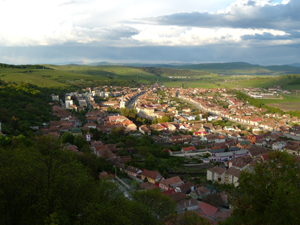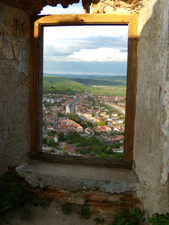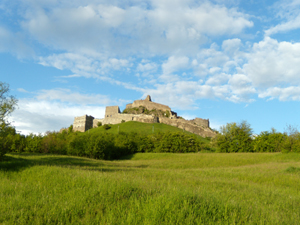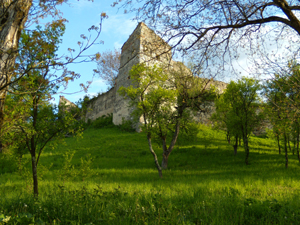Cabana 3 Stejari
village Dacia, county Brasov
Sehenswürdigkeiten
The fortress of Rupea (7 km from Dacia)
Rupea includes two settlements (the town of Rupea and the village Fiser), with a total population of 5760 inhabitants (Rupea – first documentary attestation 1324, and Fiser – first documentary attestation in 1385).
Rupea is situated between Braşov and Sighişoara, in the northern part of Braşov County, respectively 60 km north-west of Braşov and 50 km away from Sighişoara, on E60, located at an altitude of 451 m.
The fortress of Rupea, set on the Cohalm Hill and dominating the city, is an old Dacian fortress rebuilt by Saxons in the 14th century and extended in several phases until the 17th centuries.


In Dacian times, on the top of a basalt rock, there was a fortress that is said to be named Ramidava. During the 14th century, the Saxons found the fortress destroyed and built on its ruins, on several steps, a peasant fortress. They named it: Reps (much later the Hungarians named it Cohalom, meaning „rock heap„). It was for the first time mentioned in a document (castrum Kuholm) from 1324, referring to the old Saxon peasant fortress situated on the basalt rock on the northwest side of the town. Rupea (Reps) was one of the so-called „7 German towns of Transylvania (German: Siebenbürgen)„. During the history, it was a refuge place for the population of the nearby villages, and it faced many Turkish and Tatar sieges.
The particularity of the ancient Saxon Fortress of Rupea are its snail-shell-shaped fortifications. The entrenchment consists of three parts:
- The Upper part of the Fortress, built before the German colonization;
- The Middle Fortress built in the 15th century;
- The Lower part of the Fortress built in the 18th century.


The entrance in the „Upper Fortress„, with a surface of 1,500 sqm, is located under the Powder Tower. The „Middle Fortress„, covering the largest area, disposed between four towers, out of which one had three ramparts and another, the „tower of writers„, used to accommodate the archive.
In the 17th century, the walls of the „Lower Fortress„, provided with loopholes, rose 4-5 meters high, and there were also an entrance tower and a portcullis. In 1623, a 41 meter-deep well was dug.
In 1790, a strong storm destroyed the fortress roof, and since then the edifice was abandoned.


